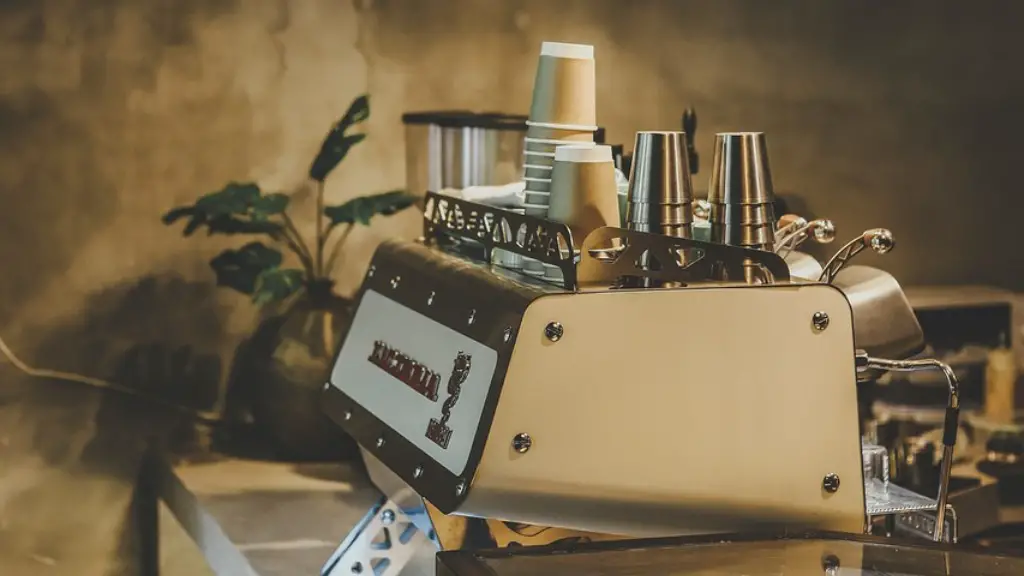Are you looking to start your own restaurant? Great! Opening a restaurant is a huge undertaking, but with careful planning, it can be a successful and rewarding experience. Here are a few tips on how to plan to open a restaurant:
1. Define your concept. What kind of restaurant do you want to open? What will the ambiance be like? What type of food will you serve? Answering these questions will help you create a focused and feasible business plan.
2. Location, location, location. A successful restaurant needs a good location. Consider factors like foot traffic, parking, and competition when choosing a spot for your restaurant.
3. Create a detailed business plan. This document will outline your restaurant’s goals, strategies, and financial projections. It’s essential to have a clear and concise plan before moving forward with your business.
4. Find the right team. Hiring a talented and experienced staff is crucial for any restaurant. From the front of house to the back of house, you’ll need a team that is passionate about delivering great food and service.
5. market your restaurant. Getting the word out about your restaurant is important for attracting customers. Create a marketing plan that includes traditional and digital
The first step is to develop a business plan. This will help you determine the costs associated with opening and operating a restaurant. Next, you will need to secure financing. This can be done through a bank loan, private investors, or a combination of both. Once you have the funding in place, you will need to find a location for your restaurant. Once you have found a suitable location, you will need to obtain the necessary permits and licenses from the local government. Finally, you will need to hire staff and purchase supplies.
How much money would I need to start a restaurant?
If you’re thinking of opening your own restaurant, it’s important to know that startup costs can vary widely. They can range from $175,500 to $750,000, so it’s important to do your research and figure out what you’ll need to budget for.
One way to reduce your startup costs is to use the ghost kitchen method. This is where you rent out a commercial kitchen space and use it to prepare all of your food. This can be a great way to reduce your overhead costs and get your business up and running without breaking the bank.
A checklist for starting a restaurant:
1. Define your restaurant concept.
2. Create a business plan for your restaurant.
3. Research funding options for your restaurant.
4. Obtain licenses and permits needed to open a restaurant.
5. Register your business.
6. Select the right location.
7. Order restaurant equipment.
8. Hire the right staff.
How much does it cost to own a small restaurant
When looking at the average startup costs for a restaurant in 2021, there are a number of factors that can affect the overall cost. Depending on your location, equipment, furniture, and rent, the average startup cost to open a restaurant can range from as little as $175,000 to well over $700,000.
Some of the biggest expenses for opening a restaurant include the cost of leasing or buying a commercial space, outfitting the kitchen with all the necessary equipment, and purchasing furniture and decor for the dining area. Additionally, you’ll need to factor in the cost of hiring staff, obtaining any necessary licenses and permits, and marketing your new business.
If you’re considering opening a restaurant, it’s important to do your research and create a detailed business plan to ensure that you have a clear understanding of all the costs involved. With careful planning and execution, you can open a successful restaurant without breaking the bank.
If you’re planning on opening a restaurant in Ohio, you’ll need to obtain several licenses and permits from the state. These include a business license, a certificate of occupancy, a food handler’s license (also known as a food service license), a seller’s permit, and a liquor license permit. You’ll also need to obtain a food facility health permit and a building health permit from the county or city in which your restaurant will be located.
Do small restaurants make money?
Restaurants are profitable businesses, but they have relatively low profit margins. profitability for a restaurant depends on a number of factors, including the size and type of restaurant, as well as economic conditions. It typically takes an average of two years for a new restaurant to become profitable.
There is a big range in how much restaurant owners can make in a year, according to Payscale.com and Chron.com. On the low end, restaurant owners make around $31,000 a year, and on the high end they can make up to $155,000 a year. The national average is somewhere in the middle, at around $65,000 a year. Obviously, there are a lot of factors that can affect how much a restaurant owner makes in a year, including the size and location of the restaurant, the type of food served, and the owner’s experience.
What not to do when opening a restaurant?
Starting a restaurant takes a lot of hard work, dedication, and most importantly, money. It is important to have a solid budget in place before opening your doors to avoid common mistakes that can lead to financial ruin. Additionally, a complicated menu can be a turnoff for customers, so it is important to keep things simple. Don’t forget about the various licenses and permits required to operate a restaurant, and make sure your staff is properly trained. Finally, pay attention to data and feedback to ensure your business is on the right track, and use social media to help spread the word.
Opening a restaurant can be a very difficult and stressful process, especially for those who are not very organized or in-control. However, once the doors are open and customers begin to come, it is a process that is definitely worth the effort.
Is opening a restaurant a good investment
When it comes to investing in a restaurant, it’s important to do your homework and understand the risks involved. While restaurants can be good investments, they have a high failure rate, especially within the first five years. This makes them a high-risk investment. If you’re considering investing in a restaurant, it’s crucial to choose an established one (preferably a franchise) and to study the financials carefully before making any decisions.
A ghost kitchen is a commercial kitchen that is used to prepare meals that are delivered to customers, typically via a third-party delivery service. These kitchens are often located in existing restaurants or other food service establishments, and they typically have no dining area for customers.
The startup costs for a ghost kitchen can vary widely depending on the size and complexity of the kitchen, as well as the city in which it is located. In some cases, local providers may offer options for less than $10,000, but in other cases, the costs can range up to $50,000 or more.
Do restaurant owners make a lot of money?
If you’re thinking about becoming a restaurant owner, it’s important to know that the average salary can range widely – from $33,000 to $155,000 per year. Where you open your restaurant, what kind of offerings you have, and what amenities you provide will all play a role in determining your annual salary. However, with a little research and planning, you can ensure that you are in the higher end of this salary range.
If you are looking to purchase a restaurant, it is important to first research the cost of building a new location from scratch. Depending on the restaurant’s financials, you may be able to acquire an open and operating restaurant for much less than the cost of building out a new one. This could be a great option if you are looking to get into the restaurant business without incurring a large upfront cost.
How much is a food license in Ohio
A food service license in Ohio costs no more than $15. This low cost is to ensure that anyone working in a restaurant can afford to get certified.
All food-related businesses must register with their local authority at least 28 days before opening. Registration is free and cannot be refused. This will ensure that the business is compliant with all local food safety regulations.
Can you sell food in Ohio without a license?
Selling homemade food in Ohio is fairly simple given the lack of regulations in place. Home-based business owners do not need permits to get started, and Ohio imposes no cap on annual gross revenue. This makes it an attractive option for those looking to start their own food-based business. However, it is important to be aware of the food safety guidelines in place to ensure that your products are safe for consumption.
There are several types of restaurants that are known for their high profitability. These include bars, diners, food trucks, pizzerias, pasta restaurants, and others. Each type of restaurant has its own unique selling points and advantages that contribute to its overall profitability.
How do restaurant owners pay themselves
There are a few different ways that restaurant owners can get paid. They can either earn a consistent salary each year, take a portion of the restaurant’s overall profits, or have a combination compensation package that combines a regular salary and dividends from business profits. Each method has its own advantages and disadvantages, so it’s important to choose the one that’s best for your particular situation.
This is an average restaurant in the US making $1350 per day. This comes from around 47 transactions, with each customer spending around $27 daily. So, we can say that restaurants make about $40,500 monthly, which comes down to $486,000 annually.
Warp Up
There is no one-size-fits-all answer to this question, as the best way to open a restaurant will vary depending on the individual circumstances. However, some tips on how to plan to open a restaurant include:
1. Research your concept and draw up a business plan: This step is crucial in order to ensure that your restaurant has a solid foundation. Make sure to do your homework on the competition and what the dining market looks like in your area.
2. Choose a location: Once you have a better understanding of your concept and what your target market is, you can start looking for the perfect location for your restaurant. Keep in mind factors such asfoot traffic, parking, and proximity to other businesses and attractions.
3. Put together a team: Assemble a group of individuals with the skills and experience necessary to help you open and run your restaurant successfully. This may include a chef, manager, waitstaff, and marketing and financial consultants.
4. source your supplies: Another important step in opening a restaurant is to identify reliable vendors for all of your food, beverage, and other supplies. This process can take some time, so it is important to start early.
5. Create a marketing plan:
The process of opening a restaurant can be daunting, but with careful planning, it can be a successful endeavor. First, research the type of restaurant you want to open and the location you want to open it in. Then, develop a business plan and secure the necessary financing. Next, find a good location and design your restaurant space. Finally, hire staff, procure supplies, and promote your new restaurant. By following these steps, you can open a successful restaurant.





